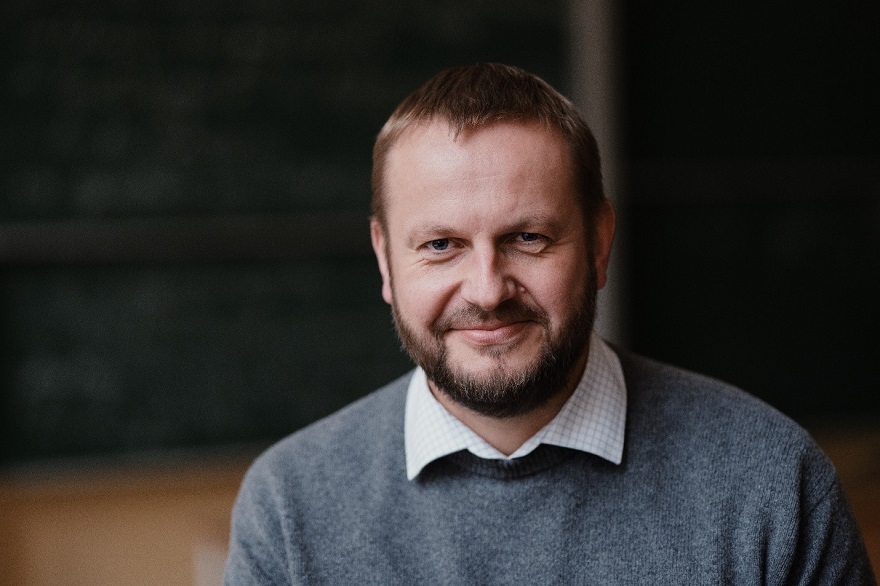Lithuanian researchers believe that if we want to prevent the disappearance of the Lithuanian language, it should become a language used not only by us, but also by state-of-the-art technology. Our researchers have already made a significant progress in the field of speech recognition technology, which can help home assistants to start speaking Lithuanian. What’s it all about? Speech recognition is when a computer recognises what we say. This technology should not be confused with other technologies such as voice recognition, where a device recognises and identifies the voice of a particular person, and language identification, which means that a machine identifies what language (English, Lithuanian, etc.) a person is speaking.

MIF robots. Photo by Justinas Auškelis
Speech technology: how does it work?
Gediminas Navickas, a researcher at the Faculty of Mathematics and Informatics of Vilnius University (VU MIF), says that speech recognition is the ability of a computer, robot or other machine to decode what a person is saying and turn it into text. “The text can then be interpreted as a command to a robot or other machine, and then it can be used in the digital environment, just like any other text,” he says. People can read this text, generated by speech technology, in the form of an article, a social media post or any other form without realising that it has been turned into text by a computer, rather than a human. Another expert, Gintautas Tamulevičius, who is an associate professor at VU MIF, explains that automatic speech recognition still cannot match human skills in terms of versatility and accuracy. However, speech recognition technologies, like any other, are constantly evolving and improving. As a result, they can increasingly facilitate the work of some professions, for example, journalists.
“When developing Lithuanian speech recognition engines, the first thing to do is to collect a large number of speech samples, i.e. audio recordings. Then you need to describe or annotate them, i.e. write down exactly what was said in the recording and at what time. The collection of these recordings is called a speech corpus. Speech corpora can be general or specialised, for example, designed to control a robot, for conversations in medicine or any other specialised field,” the expert explains the principle of how speech technology works. “Later on, such corpora are used to train recognition engines, and the computer is trained to associate the audio signal with text. This is done using artificial neural networks, i.e. what we now call artificial intelligence, which is on the rise,” says the VU researcher about the technology that recognises what we are saying. Assoc. Prof. Tamulevičius adds: “Artificial intelligence methods make it possible to achieve extremely high recognition accuracy even in less favourable conditions, for example, in the presence of high ambient noise, echoes in the room, or unclear speech”.

Gediminas Navickas. Photo by Justinas Auškelis
Lithuanians keep up with the technology
According to Assoc. Prof. Tamulevičius, research on Lithuanian speech recognition began back in the 1970s–1980s, when the first scientific publications on the topic of recognition of single words in Lithuanian speech were published. And although the scope or results were not as impressive as those in studies on English or French languages, they still played an important role in keeping Lithuanian on a similar technological level to the major languages.
The two largest projects on speech recognition are LIEPA and LIEPA-2. They were initiated by VU Professor Laimutis Telksnys and a number of other VU researchers, who were not only information technology specialists, but also philologists, teachers, and robotics specialists. The results of these projects are very significant. “The LIEPA and LIEPA-2 projects have developed Lithuanian speech recognition resources, infrastructure solutions and speech recognition-based services. The first project focused on PC users, whereas the second project, LIEPA-2, on users of mobile and smart devices and robotics,” says Assoc. Prof. Tamulevičius.

Gintautas Tamulevičius. Photo by Justinas Auškelis
The results of these projects were a good springboard for further development and implementation of Lithuanian speech recognition. Specifically, two humanoid robots were created during the LIEPA-2 project: Ąžuolas and Liepa. Chat scripts were developed and installed in the robots allowing them to communicate and answer questions on specific topics, for instance, road traffic rules. “The aim of these scripts is to explain the rules, principles and other educational material to children in a playful way, to get them used to technology and robotics solutions,” Assoc. Prof. Tamulevičius describes the adaptation of the robots. These robots have become kind of a symbol of VU MIF and are very popular among both children and adults: they take part in various events, visit schools, contribute to Lithuanian speech recognition and robotics development. Ąžuolas and Liepa have even received attention from the President’s Office, the ministries, and the European Commission. “VU MIF researchers and students continue to work to bring robots even closer to humans: to develop robots’ abilities to hear, understand and respond to questions and queries in our native language. And why not dream of communities of humans and robots communicating in such a complex and beautiful Lithuanian language?” comments the associate professor.
Will Alexa speak Lithuanian?
The development of speech resources and technologies should be an ongoing process, as the technologies and the need for them evolve, and the demands on them increase. “A short while ago, a talking machine was something extraordinary, but today we want it not only to talk, but also to do it with quality,” says Mr Navickas. VU researchers are already preparing for the LIEPA-3 project and planning to develop solutions for Lithuanian speech recognition and synthesis, as well as robotics. “It is very important to continue with the Lithuanian language projects and to develop Lithuanian language resources and technologies. Even standing still in this field is a step backwards, as other languages keep moving forward,” the researcher believes.
As for speech technologies and the need for machines to speak Lithuanian, the question naturally arises: will these technologies ever be applied to improve the everyday life of Lithuanians? Will the well-known home assistants such as Alexa, Siri and others speak Lithuanian? Mr Navickas, working on Liepa projects, says that the Lithuanianisation of virtual home assistants is not only a technological issue, but also a business one. “The Lithuanian market is small, so the manufacturers of such assistants have no interest in, or to be more precise, do not give priority to the Lithuanian language.” Mr Navickas says that there have been attempts to make the popular home assistants speak Lithuanian, but foreign companies do not want to adopt technologies developed in Lithuania, and they do not find adapting the assistants to the Lithuanian language relevant at the moment. However, the researcher remains optimistic that if these problems are solved, we could start speaking to home assistants in Lithuanian right away, and perhaps this will become a reality in the near future.
2024-01-09
